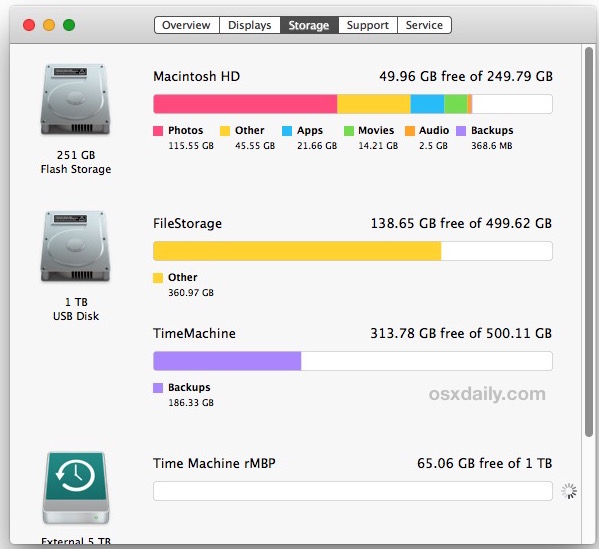
- #HOW TO CLEAN UP MAC HARD DRIVE SPACE HOW TO#
- #HOW TO CLEAN UP MAC HARD DRIVE SPACE SOFTWARE#
- #HOW TO CLEAN UP MAC HARD DRIVE SPACE OFFLINE#
- #HOW TO CLEAN UP MAC HARD DRIVE SPACE FREE#
Open SpeedUp Mac and choose the ‘ Clean my Mac’ option.įrom the list of mounted drives and volumes, select the volume from which you need to remove the unnecessary files.
#HOW TO CLEAN UP MAC HARD DRIVE SPACE HOW TO#
How to Cleanup Mac using Stellar Speedup Mac Software:
#HOW TO CLEAN UP MAC HARD DRIVE SPACE SOFTWARE#
The software provides a distinguished option ('Clean My Mac') to do the cleanup job and performs the same in few easy steps as below: Stellar SpeedUp Mac frees up disk space by searching and removing all unwanted duplicate files, language files, large files, and universal binaries. Stellar SpeedUp Mac provides option to choose any Mac volume and efficiently removes the unwanted files, depending on the set preferences. Thus, it is obvious to feel that there must be one easy to use utility to clean up my Mac at its own. Such a task is extremely cumbersome, as you need to search through your entire hard drive of some hundred folders and find out the unwanted files in them. For this, you have to browse into each & every folder of the Mac hard drive and remove the unnecessary files from them.
#HOW TO CLEAN UP MAC HARD DRIVE SPACE FREE#
In order to attain the good old speed of your Mac again, you need to increase the amount of free space in the hard drive by removing all unwanted files. However, you can easily get over this slow Mac problem by cleaning up Mac hard drive. In case, the hard drive lacks in sufficient amount of breathing space, the OS has to manage the available memory minutely and thus it appears slow while performing operations on large sized files.Įven though the actual data in the hard drive is less, there are many unwanted large files, duplicate files, language files, and universal binaries, which eat-up valuable disk space and contribute towards making the Mac slow. This space is used to load files and applications, when there is less RAM available to the operating system. Your Mac hard drive requires a certain amount of memory space to be always free. If the problem is not related to disk corruption or virus/malware infection, then surely you are running out of disk space. You get 2 GB of cloud storage free, and that 2 GB can be put to much better use on your hard drive.Has the performance of your Mac slowed down during the last couple of months? However, if you’ve got a couple gigabytes of non-essential files that you still want to keep - such as photos - consider moving them off to Dropbox or a similar service.

We’ve warned against relying too much on cloud storage. Here’s an interactive video that covers how to uninstall unneeded programs, regardless of your version of Windows.

Games, especially, can take up gigabytes of space at a time, space that you could be using for other things. The best way to recover monstrous amounts of hard drive space is to uninstall applications that you no longer use.

When you’ve made your decision, click OK and the system will remove those files and give you your precious space back.
#HOW TO CLEAN UP MAC HARD DRIVE SPACE OFFLINE#
Also, there may be things you aren’t comfortable with deleting, such as offline webpages. You can increase or decrease this space depending on which options you select. The system will calculate how much space you’ll save using the default selections. You’ll be asked to choose a drive … usually, you’ll want the current drive, C: It’s a fast way to get rid of files that you just don’t need anymore, if you ever did. This utility, included with all versions of Windows, removes temporary files, empties the Recycle Bin, deletes unnecessary backup files (generated during a Service Pack update, for example), and performs various other optional space-saving steps.
Here’s 3 simple ways to free up hard drive space and recover gigabytes of storage space. Having hard drive space is not only good for being able to save files, it’s useful for Windows to use as virtual memory, meaning that Windows uses some of that space as a temporary memory placeholder in case you max out on memory. Maybe it’s a smaller solid state drive, or maybe it’s a mammoth hard drive and you don’t feel like deleting any of your movies.


 0 kommentar(er)
0 kommentar(er)
